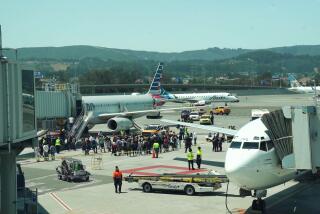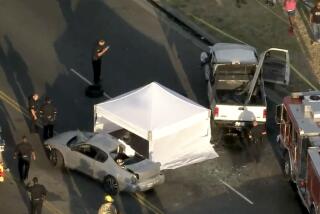S.F plane crash victim may have been run over, official says
San Francisco — One of the teenage passengers who died in the Asiana jetliner runway crash at San Francisco International Airport may have been run over by an emergency vehicle, officials said Sunday.
Two 16-year-old schoolgirls from China were found dead on the tarmac. One appears to have been ejected from the plane when it hit the seawall and began to fall apart, San Mateo County Coroner Robert J. Foucrault said. The other was found where the wreckage came to rest, near an escape chute.
The San Francisco Chronicle first reported that the second victim may have been run over by first responders. San Francisco Fire Department spokeswoman Mindy Talmadge on Sunday confirmed that the girl “did have injuries that were consistent with having been run over by a vehicle.”
“There were multiple agencies on the field yesterday and the NTSB is conducting a thorough investigation of the entire accident scene,” Talmadge said in an e-mail to The Times. “The Medical Examiner will determine the cause of death of both deceased girls.”
In a follow-up interview, Foucrault said fire officials had brought the possibility to the attention of his investigators, but the girl’s cause of death is not yet known. An autopsy could be complete by Sunday night.
“The reason we do autopsies is to determine a cause of death,” he said. “What we are trying to do is determine whether this young lady died of an airline crash or of a secondary incident. If it does involve a secondary incident the people who may be involved should be aware of it, as well as the family.”
He added that, “Depending on the results I think it would only be fair to discuss those with the family before we discuss them with the media.”
On Sunday afternoon, a National Transportation Safety Board official offered new details about Saturday’s crash of the jetliner that was carrying 307 people. NTSB Chairwoman Deborah Hersman said the pilots made no distress calls and appeared to be operating smoothly moments before it slowed to a near-stall and crashed into a sea wall near the runway.
At seven seconds prior to impact, a call is heard from one crew member “to increase speed,” Hersman, said. At four seconds before impact, the sound of the “stick shaker” – which noisily vibrates to warn pilots of an impending stall – can be heard, she said. Then, one and a half seconds before impact, the cockpit crew sought to initiate a “go-around,” hoping to power back up and circle back to the runway.
Speaking at a news conference in Seoul earlier Sunday, Yoon Young-doo, Asiana’s president, described the pilots involved as “skilled” and said it could take time to determine what went wrong.
The twin-engine 777 is one of the world’s most popular long-distance planes, often used for flights of at least a dozen hours.
Thousands of passengers were stranded at San Francisco International Airport after Saturday’s crash, which shut down the airport’s four runways. SFO’s restaurants stayed open all night Saturday to cater to stranded travelers who stood for hours in long lines to change their tickets.
Two runways reopened about three hours after the crash. Some international flights began leaving again Saturday night.
About 1 p.m. Sunday, a third runway, 28R, reopened, officials said.
ALSO:
NTSB official offers new details on S.F plane crash
Third of four runways reopens at SFO, officials say
Dramatic photos from inside Asiana plane after it crashed
lee.romney@latimes.com
More to Read
Sign up for Essential California
The most important California stories and recommendations in your inbox every morning.
You may occasionally receive promotional content from the Los Angeles Times.











